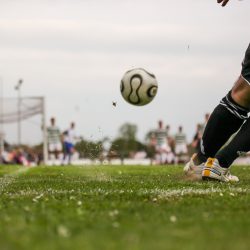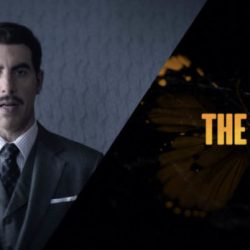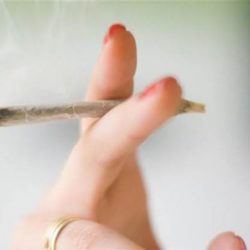What did the Indians help the Pilgrims plant?
Because it was native to North America and grew better in America than English grains, the Pilgrims called it “Indian corn.” The Wampanoag taught the English colonists how to plant and care for this crop. The herring fertilized the soil to make it good for growing corn. They planted 4-5 corn seeds in every mound.
What Indian helped the Pilgrims learn to farm?
One of the most notable pieces of knowledge passed from Wampanoag to the Pilgrims (besides how to hunt and fish), was exactly which crops would thrive the Massachusetts soil. “They taught the Pilgrims how to grow different plant groups together so that they might cooperate,” she said.
How did pilgrims farm?
The pilgrims, most of whom were city folk, seemed to do many things backward. They fenced in their gardens and let their livestock run free. They dug up all earthworms, which they considered vermin, and fed them to their chickens. Worms ate the good soil, they surmised.
What Indian tribe helped the Pilgrims survive?
When the 350th anniversary of the Pilgrim landing was observed in 1970, state officials disinvited a leader of the Wampanoag Nation — the Native American tribe that helped the haggard newcomers survive their first bitter winter — after learning his speech would bemoan the disease, racism and oppression that followed …
Which tribe helped the first settlers from Europe survive?
Without the help of Massasoit and his tribe, the first European settlers in the northernmost colonies might not have survived their first winter. The Wampanoag Indians provided them with food. They taught the settlers how to plant corn and other crops.
Did the Pilgrims and natives get along?
The Native Americans welcomed the arriving immigrants and helped them survive. Then they celebrated together, even though the Pilgrims considered the Native Americans heathens. The Pilgrims were devout Christians who fled Europe seeking religious freedom.
How the natives helped the Pioneers?
Instead of violent conflict, most Indians were helpful and generally friendly – providing needed supplies for the pioneers, operating ferries across the many rivers along the trail, helping to manage livestock, and acting as guides. The pioneers were much better armed and few trains were out of sight of another.
Who was the leader of the Pilgrims?
William Bradford
Passengers, now known as the Pilgrim Fathers, included leader William Brewster; John Carver, Edward Winslow, and William Bradford, early governors of Plymouth Colony; John Alden, assistant governor; and Myles Standish, a professional soldier and military advisor.
Did the Wampanoags help the Pilgrims?
In short, the Wampanoag tribe of Native Americans (and especially the famous Squanto, whose actual name was Tisquantum) aided the Pilgrims by helping them learn about crops, land, and the Massachusetts climate. The Wampanoag, through Squanto, further helped the Pilgrims in translation to Native American speech.
What disease killed the Pilgrims?
When the Pilgrims landed in 1620, all the Patuxet except Tisquantum had died. The plagues have been attributed variously to smallpox, leptospirosis, and other diseases.
What Native American tribe joined the Pilgrims at their first Thanksgiving?
As was the custom in England, the Pilgrims celebrated their harvest with a festival. The 50 remaining colonists and roughly 90 Wampanoag tribesmen attended the “First Thanksgiving.”
Why are natives called Indians?
American Indians – Native Americans The term “Indian,” in reference to the original inhabitants of the American continent, is said to derive from Christopher Columbus, a 15th century boat-person. Some say he used the term because he was convinced he had arrived in “the Indies” (Asia), his intended destination.
How did natives get to America?
The ancestors of living Native Americans arrived in what is now the United States at least 15,000 years ago, possibly much earlier, from Asia via Beringia. A vast variety of peoples, societies and cultures subsequently developed.
Do Native Americans celebrate Thanksgiving?
The so-called first Thanksgiving has been celebrated and taught to schoolchildren as the origin story of what would later become the United States. But many Native Americans say Thanksgiving Day is a reminder of the slaughter of millions of Indigenous people and the theft of their lands by outsiders.
Did the natives help the Pilgrims?
A friendly Indian named Squanto helped the colonists. He showed them how to plant corn and how to live on the edge of the wilderness. A soldier, Capt. Miles Standish, taught the Pilgrims how to defend themselves against unfriendly Indians.
Where did most pioneers settle?
Early pioneers extended American settlements to the Mississippi Valley. Later pioneers settled the Great Plains and the West Coast. The Oregon Trail was one of the most traveled trails heading west.
What did the Native Americans have to give up?
Working on behalf of white settlers who wanted to grow cotton on the Indians’ land, the federal government forced them to leave their homelands and walk hundreds of miles to a specially designated “Indian territory” across the Mississippi River.
What language did pilgrims speak?
All of the pilgrims came on the Mayflower Samoset (ca. 1590–1653) was the first Native American to speak with the Pilgrims in Plymouth Colony. On March 16, 1621, the people were very surprised when Samoset walked straight into Plymouth Colony where the people were living.
Why did the Wampanoags help the Pilgrims?
In short, the Wampanoag tribe of Native Americans (and especially the famous Squanto, whose actual name was Tisquantum) aided the Pilgrims by helping them learn about crops, land, and the Massachusetts climate. This helped establish a peaceful relationship between the two groups of people.
Who was the baby born on the Mayflower?
Peregrine White
Peregrine White was born to William and Susanna White in November of 1620 aboard the Mayflower, while the vessel was docked off the coast of Cape Cod. Susanna was 7 months pregnant when she had boarded the ship bound for the new world.
How did the Native Americans help the Pilgrims get food?
“The Wampanoag who lived in the area taught the Pilgrims how to smoke and dry indigenous meat and fish and how to plant the three sisters — corn, beans and squash — in mounds fertilized by fish and blessed by powdered tobacco, which is also a natural insect repellent,” said Kinorea “Two Feather” Tigri, a cultural …
What did the Native Americans use as agriculture?
The principal crops grown by Indian farmers were maize (corn), beans, and squash, including pumpkins. Sunflowers, goosefoot, tobacco, gourds, and plums, were also grown. Evidence of agriculture is found in all Central Plains complexes.
What did the Pilgrims use for fertilizer?
Using fish as a fertilizer was a common practice by many of the Native peoples of the East Coast and provided nutrients and amino acids to help in plant growth, according to tradition. Fish fertilizer, albeit in liquid form, is still in use today.
Which early Native American tribe is the oldest known culture in North America?
Clovis culture
The Clovis culture, the earliest definitively-dated Paleo-Indians in the Americas, appears around 11,500 RCBP (radiocarbon years Before Present), equivalent to 13,500 to 13,000 calendar years ago.
Did Indians plant fish with corn?
In fact, the use of fish fertilizer was traced to as far back as the Roman Empire. Native Americans showed the Pilgrims how to grow corn by planting a fish with each corn plant. The Mayans, Incas and Native Americans of the southwest all used fish to grow crops.
Did the Indians teach the Pilgrims to fish?
Many people know the Thanksgiving legend of Squanto (Tisquantum), the Native American who taught Pilgrims how to plant crops and survive in New England. But not many know that Squanto’s legend is a fish story—in more ways than one. Squanto didn’t just happen to take a liking to the pilgrims of Plymouth.
How did the pilgrims’experience with the Indians differ?
How did the Pilgrims’ experience with the Indians differ markedly from that of the settlers in Virginia? The weaker Indians decided they needed to get along with the Pilgrims to survive. Additionally, the Pilgrims were less hostile towards Indians.
What kind of crops did the pilgrims grow?
Before learning the best crops to grow in their new home, the Pilgrims would have probably tried (and failed) to grow rye, barley and wheat and a variety of English garden vegetables, according to Soil scientist Tom Sauer, who is with the USDA’s Agricultural Research Service.
Who was the first Native American to contact the pilgrims?
Soon after the Pilgrims built their settlement, they came into contact with Tisquantum, or Squanto, an English-speaking Native American. Squanto was a member of the Pawtuxet tribe (from present-day Massachusetts and Rhode Island) who had been seized by the explorer John Smith’s men in 1614-15.
What did the pilgrims bring to the first Thanksgiving?
The first Thanksgiving likely did not include turkey or mashed potatoes (potatoes were just making their way from South America to Europe), but the Wampanoag brought deer and there would have been lots of local seafood plus the fruits of the first pilgrim harvest, including pumpkin.
What did the pilgrims steal from the natives?
The Natives did steal from the pilgrims once, but they returned the things they stole back to the Pilgrims (187). The Natives acted fairly by returning what they had taken, but the Pilgrims didn’t have the same courtesy. What the Pilgrims did wasn’t right, they had used Squanto for his skills to guide to them until his death.
Soon after the Pilgrims built their settlement, they came into contact with Tisquantum, or Squanto, an English-speaking Native American. Squanto was a member of the Pawtuxet tribe (from present-day Massachusetts and Rhode Island) who had been seized by the explorer John Smith’s men in 1614-15.
When did the pilgrims have their first successful harvest?
In November 1621, the Pilgrims and the Wampanoag celebrated the colonists’ first successful corn harvest. The festivities lasted three days and included a bounty from both field and sea, but unlike today’s typical Thanksgiving, there was no pumpkin pie – obviously, ovens weren’t yet a thing and sugar was in short supply.
Why was the first Thanksgiving important to the pilgrims?
Despite their antagonism, both groups needed each other to survive. The Pilgrims were desperate to avoid starvation and aggression from hostile Native American tribes; the Wampanoags were desperate for guns. Some historians think the first Thanksgiving happened in late September or early October, when the fall crops had just been harvested.






